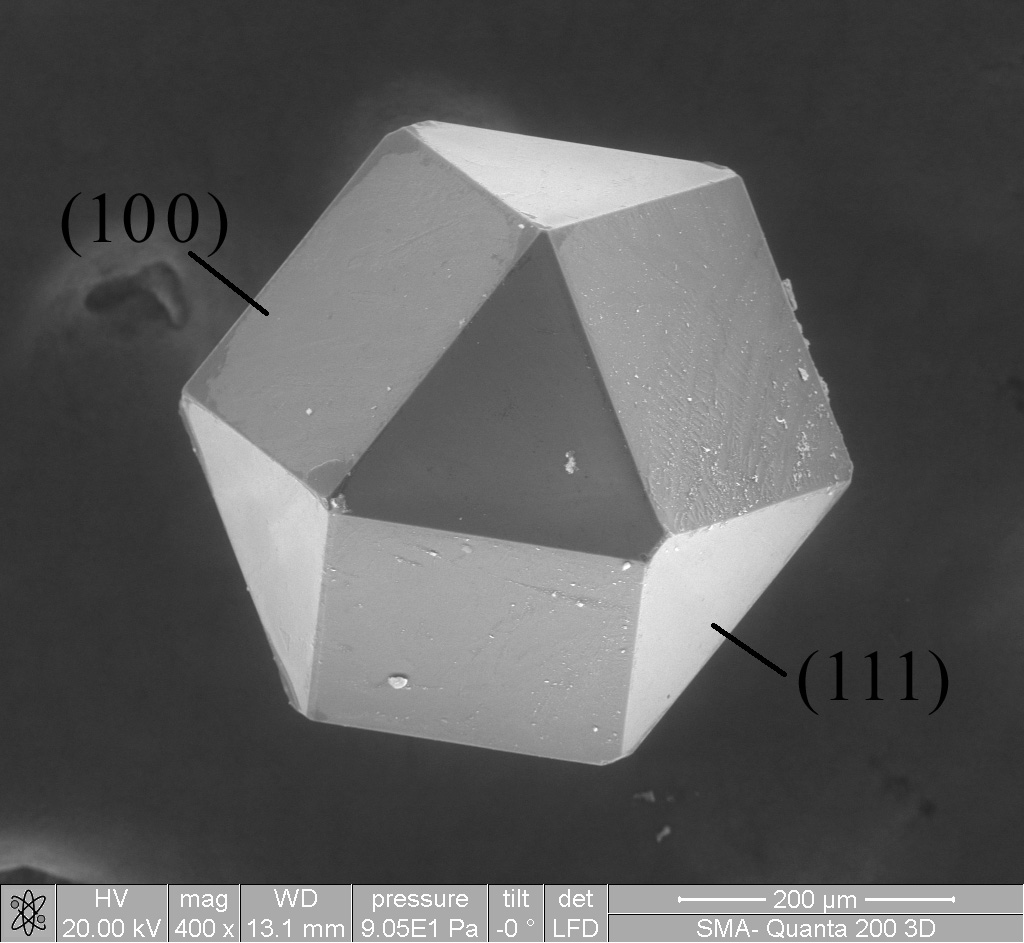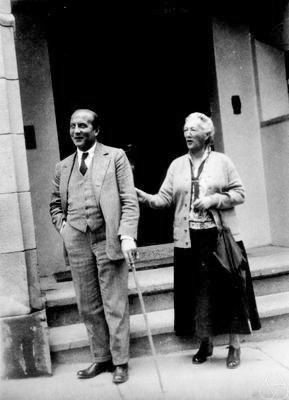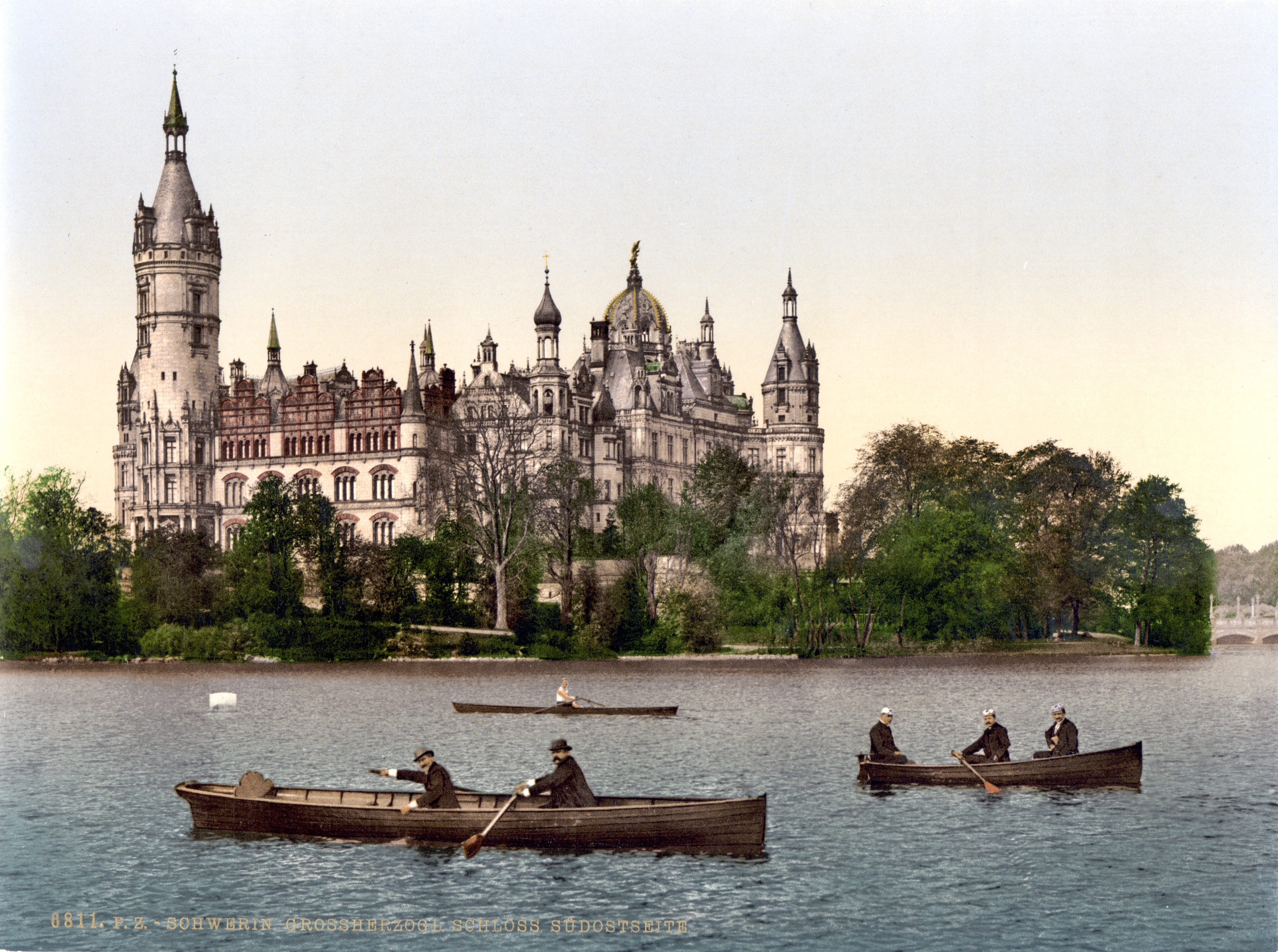|
Arthur R. Von Hippel
Arthur Robert von Hippel (November 19, 1898 – December 31, 2003) was a German American materials scientist and physicist. Von Hippel was a pioneer in the study of dielectrics, ferromagnetic and ferroelectric materials, and semiconductors and was a codeveloper of radar during World War II. Early life Von Hippel was born in Rostock, Mecklenburg-Schwerin, on November 19, 1898, and was the son of Robert von Hippel. He graduated in physics from the University of Göttingen, where David Hilbert, Richard Courant, Robert Pohl, and the Nobel Prize winners Peter Debye, Max Born, and Gustav Hertz were among his teachers in mathematics and physics. He received his Ph.D. in physics in 1924 under the Nobel Prize winner James Franck who in 1930 became his father-in-law by marriage with Franck's daughter Dagmar. Career and achievements In 1933, with the ascension of Nazis to power in Germany, von Hippel decided to move to another country, mainly because his wife was Jewish, but due als ... [...More Info...] [...Related Items...] OR: [Wikipedia] [Google] [Baidu] |
Rostock
Rostock (; Polabian language, Polabian: ''Roztoc''), officially the Hanseatic and University City of Rostock (), is the largest city in the German States of Germany, state of Mecklenburg-Vorpommern and lies in the Mecklenburgian part of the state, close to the border with Pomerania. With around 210,000 inhabitants, it is the third-largest city on the German Baltic Sea, Baltic coast after Kiel and Lübeck, the eighth-largest city in the area of former East Germany, as well as the List of cities in Germany by population, 39th-largest city of Germany. Rostock was the largest coastal and most important port city in East Germany. Rostock stands on the estuary of the Warnow, River Warnow into the Bay of Mecklenburg of the Baltic Sea. The city stretches for about along the river. The river flows into the sea in the very north of the city, between the boroughs of Warnemünde and Hohe Düne. The city center lies further upstream, in the very south of the city. Most of Rostock's inhabita ... [...More Info...] [...Related Items...] OR: [Wikipedia] [Google] [Baidu] |
Materials Science
Materials science is an interdisciplinary field of researching and discovering materials. Materials engineering is an engineering field of finding uses for materials in other fields and industries. The intellectual origins of materials science stem from the Age of Enlightenment, when researchers began to use analytical thinking from chemistry, physics, and engineering to understand ancient, phenomenological observations in metallurgy and mineralogy. Materials science still incorporates elements of physics, chemistry, and engineering. As such, the field was long considered by academic institutions as a sub-field of these related fields. Beginning in the 1940s, materials science began to be more widely recognized as a specific and distinct field of science and engineering, and major technical universities around the world created dedicated schools for its study. Materials scientists emphasize understanding how the history of a material (''processing'') influences its struc ... [...More Info...] [...Related Items...] OR: [Wikipedia] [Google] [Baidu] |
Peter Debye
Peter Joseph William Debye ( ; born Petrus Josephus Wilhelmus Debije, ; March 24, 1884 – November 2, 1966) was a Dutch-American physicist and physical chemist, and Nobel laureate in Chemistry. Biography Early life Born in Maastricht, Netherlands, Debye enrolled in the Aachen University of Technology in 1901. In 1905, he completed his first degree in electrical engineering. He published his first paper, a mathematically elegant solution of a problem involving eddy currents, in 1907. At Aachen, he studied under the theoretical physicist Arnold Sommerfeld, who later claimed that his most important discovery was Peter Debye. In 1906, Sommerfeld received an appointment at Munich, Bavaria, and took Debye with him as his assistant. Debye got his Ph.D. with a dissertation on radiation pressure in 1908. In 1910, he derived the Planck radiation formula using a method which Max Planck agreed was simpler than his own. In 1911, when Albert Einstein took an appointment as a profes ... [...More Info...] [...Related Items...] OR: [Wikipedia] [Google] [Baidu] |
Nobel Prize
The Nobel Prizes ( ; ; ) are awards administered by the Nobel Foundation and granted in accordance with the principle of "for the greatest benefit to humankind". The prizes were first awarded in 1901, marking the fifth anniversary of Alfred Nobel, Alfred Nobel's death. The original Nobel Prizes covered five fields: Nobel Prize in Physics, physics, Nobel Prize in Chemistry, chemistry, Nobel Prize in Physiology or Medicine, physiology or medicine, Nobel Prize in Literature, literature, and Nobel Peace Prize, peace, specified in Nobel's will. A sixth prize, the Nobel Memorial Prize in Economic Sciences, Prize in Economic Sciences, was established in 1968 by Sveriges Riksbank (Sweden's central bank) in memory of Alfred Nobel. The Nobel Prizes are widely regarded as the most prestigious awards available in their respective fields.Nobel Prize#Shalev69, Shalev, p. 8. Except in extraordinary circumstances, such as war, all six prizes are given annually. Each recipient, known as a laur ... [...More Info...] [...Related Items...] OR: [Wikipedia] [Google] [Baidu] |
Robert Pohl
Robert Wichard Pohl (10 August 1884 – 5 June 1976) was a German physicist and professor of the University of Göttingen. The physical institute in Göttingen led by Pohl was one of the first schools in solid state physics and Nevill Francis Mott described Pohl as the "father of solid state physics.". See also: "Components of the solid state", Nevill Mott, New Scientist, Vol. 69, No. 993, p. 663-666 (1976) He is known for relating color in alkali metal halides with the presence of vacancies and F-centers (also called color centers), a type of crystallographic defect. He also demonstrated the first transistor based on color centers. The Gudden–Pohl effect and the Pohl torsion pendulum () are named after him. Early years and education Robert Wichard Pohl was born in Hamburg as the son of the naval engineer Eugen Robert Pohl and his wife Martha. She was the daughter of , founder of the private 'Dr. Wichard Lange School', and granddaughter of , who founded the first German kind ... [...More Info...] [...Related Items...] OR: [Wikipedia] [Google] [Baidu] |
Richard Courant
Richard Courant (January 8, 1888 – January 27, 1972) was a German-American mathematician. He is best known by the general public for the book '' What is Mathematics?'', co-written with Herbert Robbins. His research focused on the areas of real analysis, mathematical physics, the calculus of variations and partial differential equations. He wrote textbooks widely used by generations of students of physics and mathematics. He is also known for founding the institute now bearing his name. Life and career Courant was born in Lublinitz, in the Prussian Province of Silesia (now in Poland). His parents were Siegmund Courant and Martha Freund of Oels. Edith Stein was Richard's cousin on the maternal side. During his youth his parents moved often, including to Glatz, then to Breslau and in 1905 to Berlin. He stayed in Breslau and entered the university there, then continued his studies at the University of Zürich and the University of Göttingen. He became David Hilbert's assista ... [...More Info...] [...Related Items...] OR: [Wikipedia] [Google] [Baidu] |
David Hilbert
David Hilbert (; ; 23 January 1862 – 14 February 1943) was a German mathematician and philosopher of mathematics and one of the most influential mathematicians of his time. Hilbert discovered and developed a broad range of fundamental ideas including invariant theory, the calculus of variations, commutative algebra, algebraic number theory, the foundations of geometry, spectral theory of operators and its application to integral equations, mathematical physics, and the foundations of mathematics (particularly proof theory). He adopted and defended Georg Cantor's set theory and transfinite numbers. In 1900, he presented a collection of problems that set a course for mathematical research of the 20th century. Hilbert and his students contributed to establishing rigor and developed important tools used in modern mathematical physics. He was a cofounder of proof theory and mathematical logic. Life Early life and education Hilbert, the first of two children and only son of O ... [...More Info...] [...Related Items...] OR: [Wikipedia] [Google] [Baidu] |
Physics
Physics is the scientific study of matter, its Elementary particle, fundamental constituents, its motion and behavior through space and time, and the related entities of energy and force. "Physical science is that department of knowledge which relates to the order of nature, or, in other words, to the regular succession of events." It is one of the most fundamental scientific disciplines. "Physics is one of the most fundamental of the sciences. Scientists of all disciplines use the ideas of physics, including chemists who study the structure of molecules, paleontologists who try to reconstruct how dinosaurs walked, and climatologists who study how human activities affect the atmosphere and oceans. Physics is also the foundation of all engineering and technology. No engineer could design a flat-screen TV, an interplanetary spacecraft, or even a better mousetrap without first understanding the basic laws of physics. (...) You will come to see physics as a towering achievement of ... [...More Info...] [...Related Items...] OR: [Wikipedia] [Google] [Baidu] |
Robert Von Hippel
Robert Wilhelm Ferdinand von Hippel (8 July 1866 - 16 June 1951) was a German jurist and University lecturer born in Königsberg. Family Robert was the son of Arthur von Hippel (physician) and elder brother of Eugen von Hippel and ''Richard von Hippel'' (1869-1918). He married ''Emma Bremer'' (1871-1925) in Strasbourg during 1894 and was the father of four children, including German-American physicist Arthur R. von Hippel. After the death of his first wife, he married ''Johanna von Koenen'' (1882-1965), the daughter of Adolf von Koenen, in Göttingen during 1927. Retrieved 2 March 2021 [...More Info...] [...Related Items...] OR: [Wikipedia] [Google] [Baidu] |
Grand Duchy Of Mecklenburg-Schwerin
The Grand Duchy of Mecklenburg-Schwerin () was a territory in Northern Germany held by the House of Mecklenburg residing at Schwerin. It was a sovereign member state of the German Confederation and became a federated state of the North German Confederation and finally of the German Empire in 1871. Geography Like its predecessor, the Duchy of Mecklenburg-Schwerin, the Schwerin lands upon the incorporation of the extinct Duchy of Mecklenburg-Güstrow in 1701 comprised the larger central and western parts of the historic Mecklenburg region. The smaller southeastern part was held by the Duchy of Mecklenburg-Strelitz branch of the grand ducal house, who also ruled over the lands of the former Prince-Bishopric of Ratzeburg in the far northwest. The grand duchy was bounded by the Baltic Sea, Baltic coast in the north and the Kingdom of Prussia, Prussian province of Province of Pomerania (1815–1945), Pomerania in the northeast, where the border with the Western Pomerania, Hither Pome ... [...More Info...] [...Related Items...] OR: [Wikipedia] [Google] [Baidu] |
Semiconductor
A semiconductor is a material with electrical conductivity between that of a conductor and an insulator. Its conductivity can be modified by adding impurities (" doping") to its crystal structure. When two regions with different doping levels are present in the same crystal, they form a semiconductor junction. The behavior of charge carriers, which include electrons, ions, and electron holes, at these junctions is the basis of diodes, transistors, and most modern electronics. Some examples of semiconductors are silicon, germanium, gallium arsenide, and elements near the so-called " metalloid staircase" on the periodic table. After silicon, gallium arsenide is the second-most common semiconductor and is used in laser diodes, solar cells, microwave-frequency integrated circuits, and others. Silicon is a critical element for fabricating most electronic circuits. Semiconductor devices can display a range of different useful properties, such as passing current more easil ... [...More Info...] [...Related Items...] OR: [Wikipedia] [Google] [Baidu] |
Ferroelectric
In physics and materials science, ferroelectricity is a characteristic of certain materials that have a spontaneous electric polarization that can be reversed by the application of an external electric field. All ferroelectrics are also piezoelectric and pyroelectric, with the additional property that their natural electrical polarization is reversible. The term is used in analogy to ferromagnetism, in which a material exhibits a permanent magnetic moment. Ferromagnetism was already known when ferroelectricity was discovered in 1920 in Rochelle salt by American physicist Joseph Valasek.See and Thus, the prefix ''ferro'', meaning iron, was used to describe the property despite the fact that most ferroelectric materials do not contain iron. Materials that are both ferroelectric ''and'' ferromagnetic are known as multiferroics. Polarization When most materials are electrically polarized, the polarization induced, ''P'', is almost exactly proportional to the applied extern ... [...More Info...] [...Related Items...] OR: [Wikipedia] [Google] [Baidu] |





